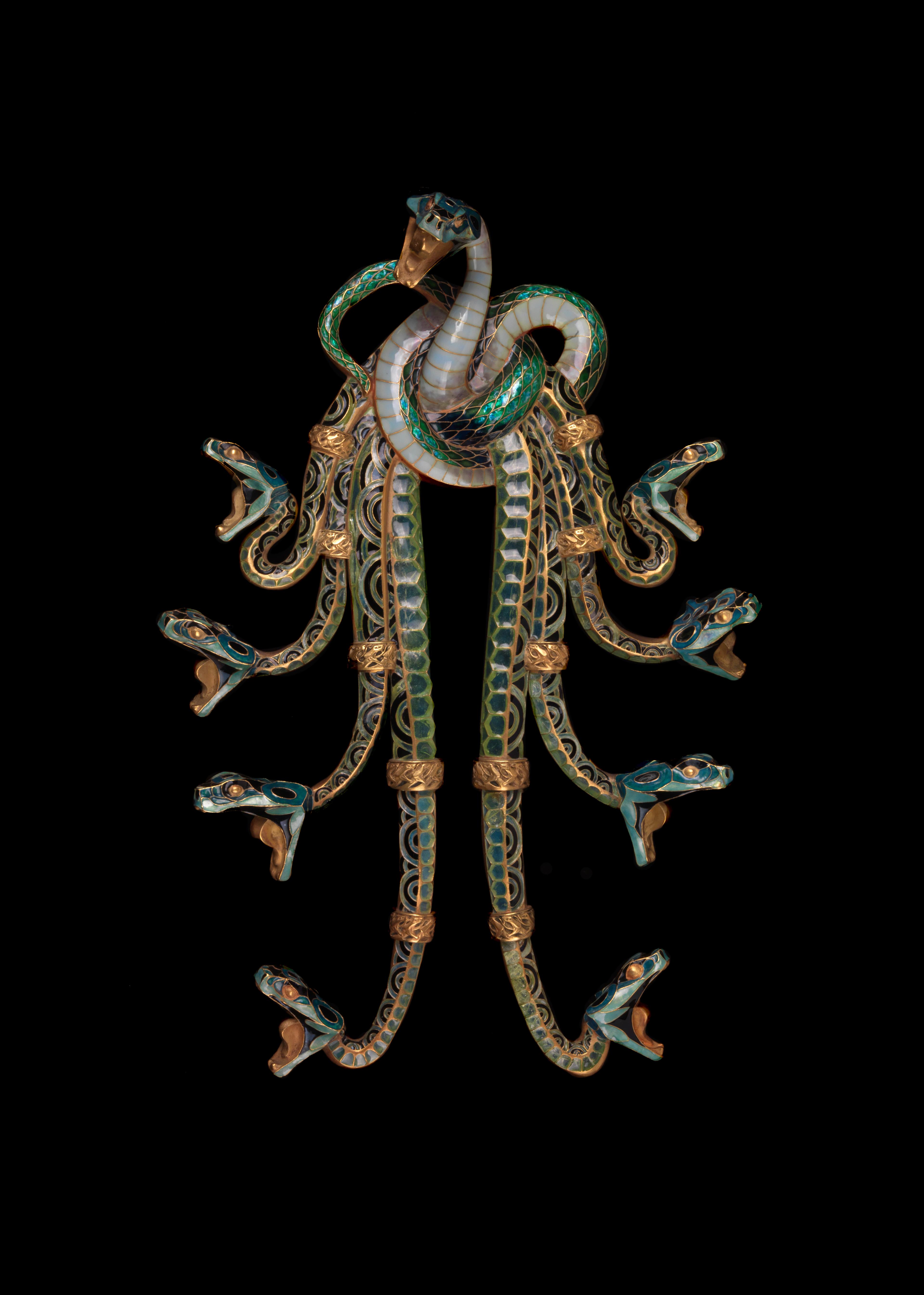Gallery

This piece can be considered one of the paradigms of Lalique’s jewellery production, both for the mastery of its execution and the choice of theme. Reptiles were, indeed, a frequent source of inspiration for the artist throughout his career, a motif to which he constantly returned, both in the jewellery of the Art Nouveau period and in the glass production of the Art Deco period.
The nine intertwined serpents that make up the corsage ornament, in stained glass enamel and enamelled gold, form a knot from which the bodies of eight of them cascade down, with the ninth rising up in the centre at the top of the jewel. The heads of the reptiles, in attack position, have open mouths from which rows of pearls may have hung. A piece of jewellery whose whereabouts today are unknown and of which this is probably the only replica, featured prominently at the 1900 Paris Exposition.
Object details
- Author(s)
- René Lalique (1860-1945), Jeweler
- Title
- Corsage ornament «Serpents»
- Origin
- France
- Date
- c. 1898 – 1899
- Materials
- Enamel; Gold
- Technique
- Chased and enamelled gold
- Dimensions
- Height 210,00 mm; Width 143,00 mm
- Inventory no.
- 1216
Incorporation
- Type
- Purchased
- Provenance
- René Lalique (1860-1945)
- Date
- 1908